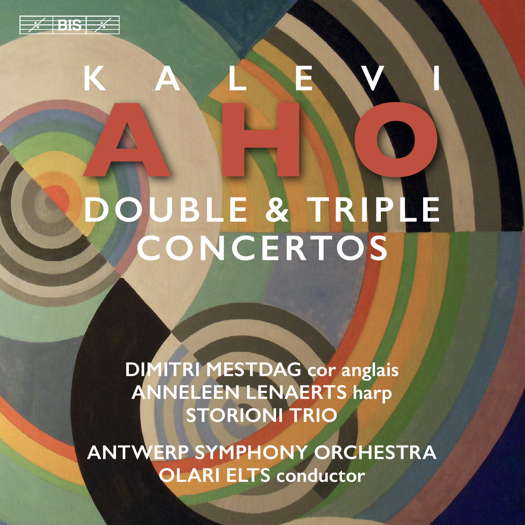- Jan Václav Hugo Voříšek
- ENO
- Salzburg Summer Festival
- Kurt Weill
- a cappella
- Slavonic Dances
- Verbier
- Szymanowski: Violin Concerto No 2
 WORD SEARCH: Can you solve Allan Rae's classical music word search puzzles? We're currently publishing one per month.
WORD SEARCH: Can you solve Allan Rae's classical music word search puzzles? We're currently publishing one per month.
 DISCUSSION: What is a work? John Dante Prevedini leads a discussion about The performing artist as co-creator, including contributions from Halida Dinova, Yekaterina Lebedeva, Béla Hartmann, David Arditti and Stephen Francis Vasta.
DISCUSSION: What is a work? John Dante Prevedini leads a discussion about The performing artist as co-creator, including contributions from Halida Dinova, Yekaterina Lebedeva, Béla Hartmann, David Arditti and Stephen Francis Vasta.

Kalevi Aho: Double & Triple Concertos
BIS-2426 (BIS Records, SACD)
DSD
Multi-channel/Stereo
FIRST RELEASE (7 January 2022)
Playing time: 59'11"
Tracks: 8
Booklet pages: 28
℗ 2021 BIS Records AB
© 2021 BIS Records AB
Main country of recording: Belgium
Reviewer: Gerald Fenech
Review of Kalevi Aho: Double & Triple Concertos published on 1 February 2022
Dimitri Mestdag, cor anglais
Anneleen Lenaerts, harp
Storioni Trio:
Wouter Vossen, violin
Marc Vossen, cello
Bart van de Roer, piano
Antwerp Symphony Orchestra
Olari Elts, conductor
Kalevi Aho (born 1949):
Double Concerto for cor anglais, harp and orchestra (2014)
1 [without title] — attacca —
2 Cadenza — attacca —
3 Allegro — attacca —
4 Adagio
Triple Concerto for violin, cello, piano and chamber orchestra (2018)
5 Lullaby. Andante
6 Presto
7 Tranquillo, misterioso
8 Andante — Allegro molto
Recorded 25-28 June 2019 at Elisabethzaal, Antwerp, Belgium
Concertos for cor anglais are few and far between, and harp concertos aren’t very common either. In combining the two, Kalevi Aho has come up with a true rarity - possibly the only double concerto in existence for these two instruments. Composed in 2014, the work was commissioned by the Antwerp Symphony Orchestra for two of its solo players: Anneleen Lenaerts and Dimitri Mestdag, who also perform it here. The work is characteristically eclectic, making the most of the sonic possibilities of the solo instruments, but also of the orchestral palette. The Antwerp Symphony Orchestra is no newcomer to Aho's music, having previously recorded his concertos for trombone and trumpet. On the present disc, it also provides support for the Storioni Trio, in the Triple Concerto for violin, cello, piano and chamber orchestra, a joint commission by the trio and the orchestra. In 2017, as Aho started work on the concerto, his granddaughter was born. Having written a lullaby for her, he decided to use that as the core melodic material of the piece. The lullaby is heard several times in the first movement, which is quite tonal and very dreamlike. It also features in the movements that follow, while the harmonic language becomes more complex. Aho himself describes the work as having 'a general atmosphere full of joy and positive (sometimes quite virtuosic) energy.'

